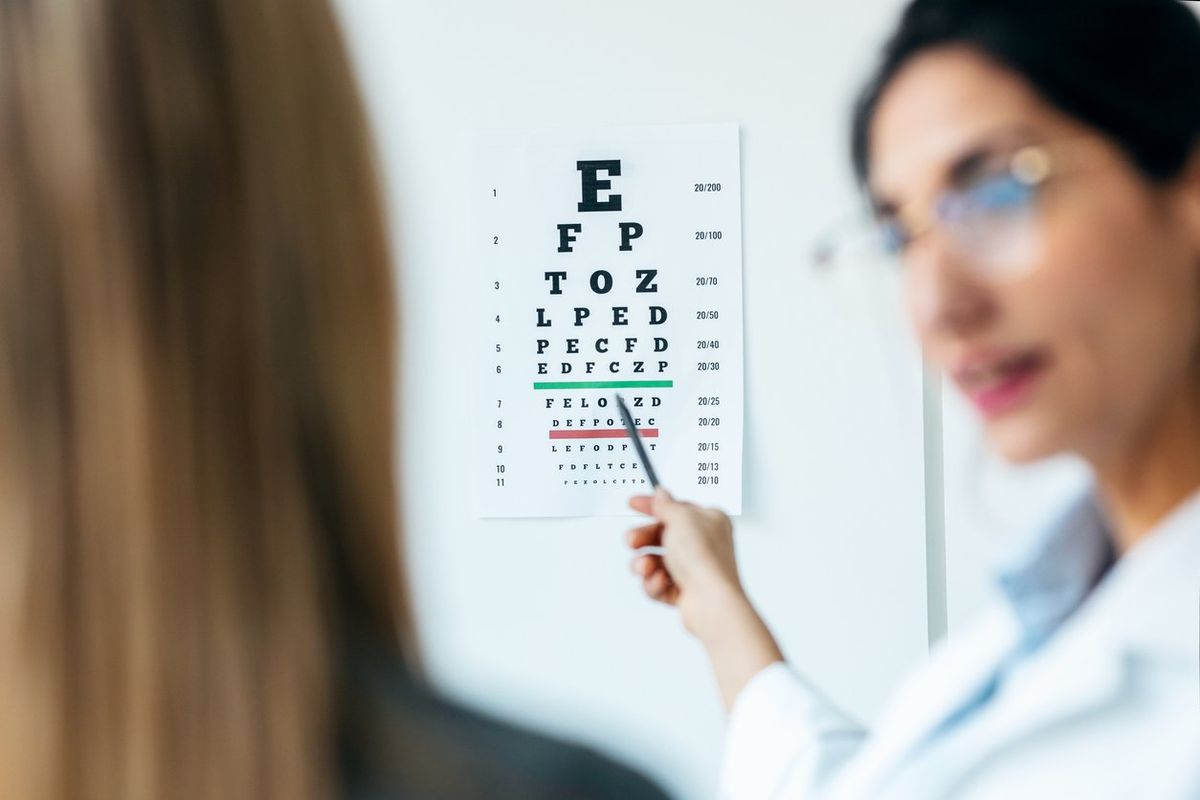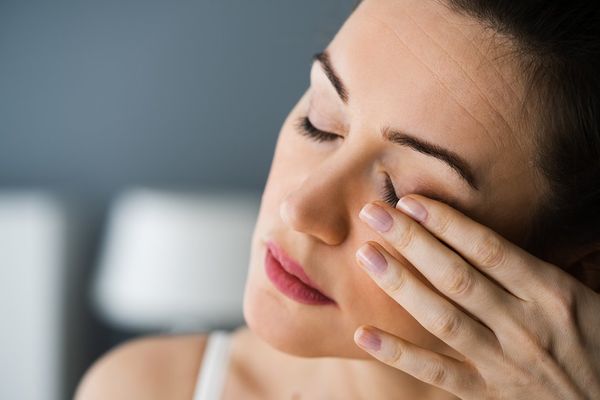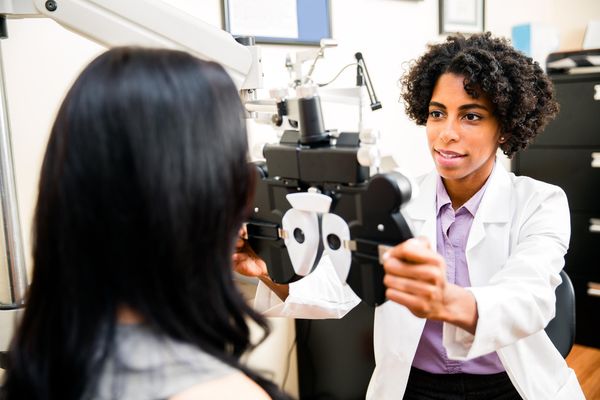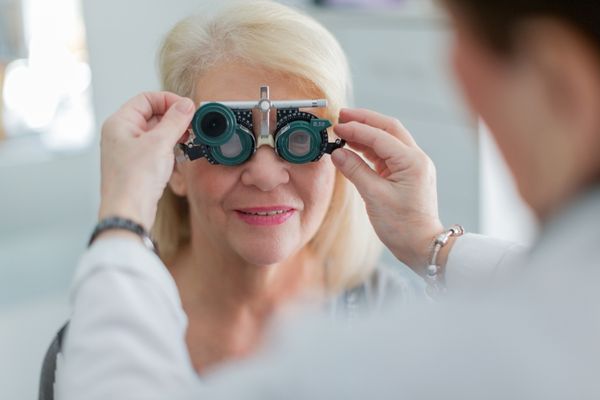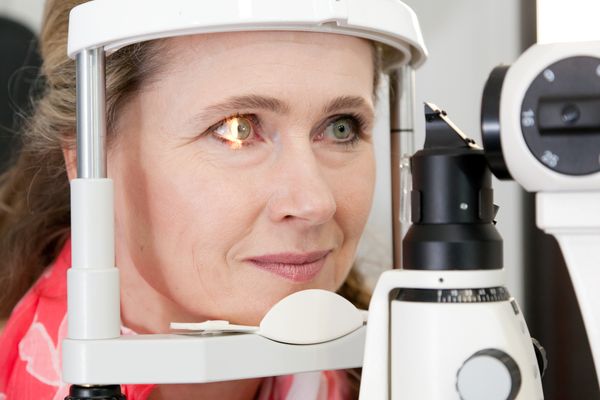May is Healthy Vision Month.
My partner, Tom, often brags about his great eyesight. And I’ve always just assumed he has perfect vision because he’s dating me.
But I had to give him major side-eye when he told me it’s been decades since his last eye exam.
To be clear, everyone should get an eye exam at age 40 — regardless of how good you think your vision is. This is because your eyes change as you age, and the earlier you catch signs of disease — the better. But eye exams are especially important for women and people assigned female at birth (AFAB) considering women are at higher risk for eye diseases than men.
Read: Women’s Eye Health 101 >>
What does an eye exam include?
The standard eye exam evaluates vision and overall eye health through a series of different tests.
First, your healthcare provider (HCP) will go over your medical history with you. This can include medications you’re taking, family history of health conditions and whether you wear corrective lenses.
To test how well you can see, most HCPs use a version of the iconic Snellen vision test. The chart has big letters at the top that get increasingly smaller toward the bottom. The test measures visual acuity, or how sharp your vision is from 20 feet away. This is where the term “20/20 vision” comes from. The top number refers to the distance — 20 feet — and the bottom number is the last line you can read correctly.
If you wear contacts or glasses, your HCP will have you look through a device called a refractor or a phoropter, which has different lenses to help determine your prescription.
An eye exam also checks:
- Eye movement
- Eye pressure
- The front part of your eye (cornea, eyelids, iris and lens)
- Pupils
- Side vision
To check for signs of damage in your retina and optic nerve, the HCP will put drops in your eye that widen (dilate) the pupil. Note: The dilation can make you sensitive to sunlight, so bring your sunglasses and someone to drive you home.
Who should get an eye exam and how often?
If you have overall healthy eyes, the frequency of eye exams depends on your age.
If you’re 20 to 39 years old:
- Get a complete eye exam every five to 10 years
- Get yearly exams if you wear corrective lenses
If you’re 40:
- Get an eye exam even if you have had no previous problems
After age 40, get an eye exam:
- Every two to four years until age 54
- Every one to three years for people ages 55 to 64
- Every one to two years for people ages 65 and older
People with a family history of eye disease, health conditions like diabetes and other risk factors may need to be seen more frequently than people who don’t have known eye issues. Check in with your HCP to see if you need an exam.
Ophthalmologist vs. optometrist
Routine eye care can be provided by both ophthalmologists and optometrists. The difference between the two is the level of training.
Ophthalmologists have medical degrees (MDs) and surgical training to care for all eye conditions. People with more serious eye problems should see an ophthalmologist.
Optometrists, on the other hand, are not medical doctors but have a doctor of optometry (OD) degree and can provide routine eye and vision exams.
Eye problems found during an exam
Many serious eye conditions don’t have symptoms in the early stages. An exam can help diagnose disease and prevent vision loss and blindness.
Common eye conditions found during an exam can include:
- Cataracts: Clouding in the lens of the eye that can cause blurry vision, trouble with night vision, sensitivity to light and double vision
- Diabetic retinopathy: An eye condition that affects the blood vessels in the eyes of people with diabetes. It can cause floating spots, blurred vision and blindness
- Glaucoma: A group of eye diseases that affect the nerve in the back of the eye (optic nerve) and cause loss of side vision and blindness
- Age-related macular degeneration: An eye disease that causes blurry central vision and can lead to vision loss
Eye exams are also crucial for catching early signs of chronic health conditions, such as diabetes, multiple sclerosis and high blood pressure.
Eye exam cost
The cost of an eye exam can vary depending on where you go and whether you have vision insurance. Without insurance, the price can range anywhere from $50 to $200.
Medicaid may cover routine eye exams, but plans vary by state, so check your coverage before getting an exam.
Does Medicare cover eye exams?
Original Medicare plans do not cover eye exams. Most Medicare Advantage (Part C) plans cover vision care, including yearly eye exams and coverage of glasses or contact lenses.
Keep an eye on your eye health
Getting an eye exam is the best way to spot early warning signs of disease and other problems that may cause vision loss and blindness. An exam can even help diagnose chronic conditions hidden in plain sight.
If you haven’t had an eye exam, or it’s been a long time — make an appointment.
This educational resource was created with support from Viatris, a HealthyWomen Corporate Advisory Council member.
- I’m an Optometrist, but That Didn’t Make It Any Easier to Tell My Grandmother She Has Macular Degeneration ›
- Clinically Speaking: Questions and Answers About Dry Eye Disease ›
- Preventive Health Screenings for Women - HealthyWomen ›
- Women’s Eye Health 101 ›

